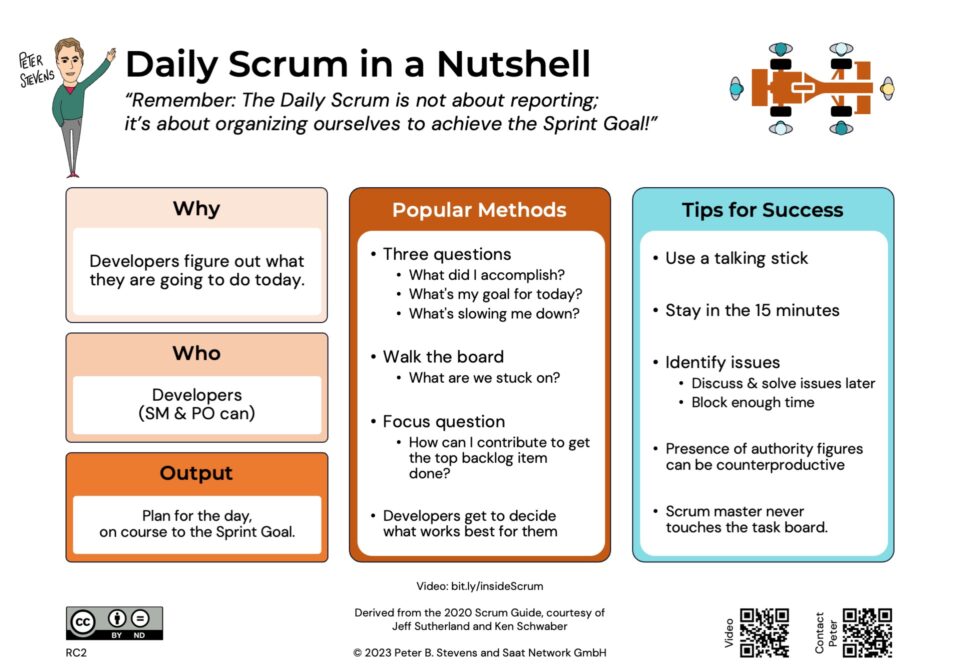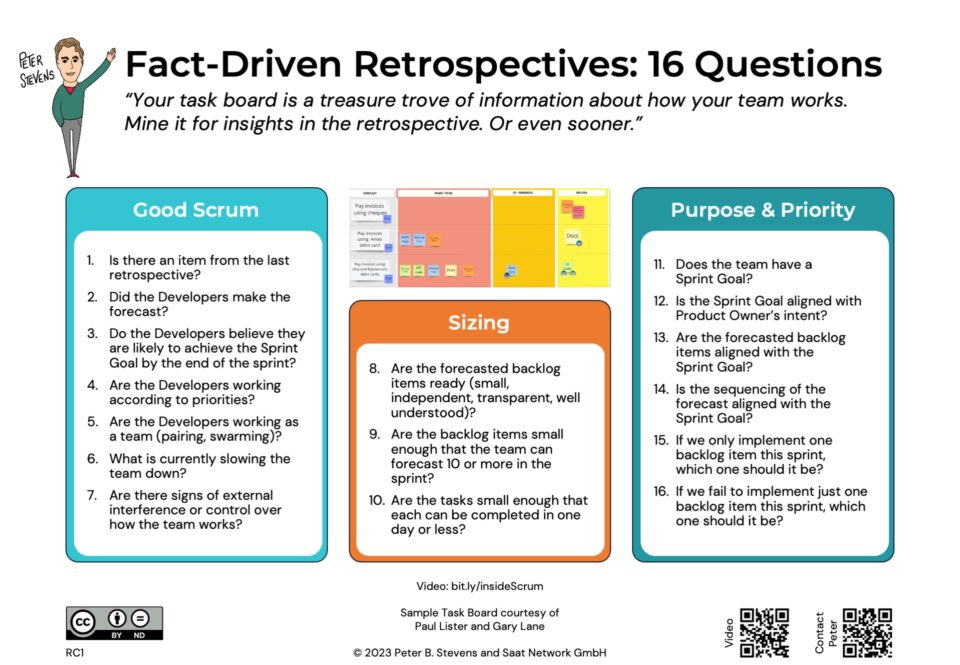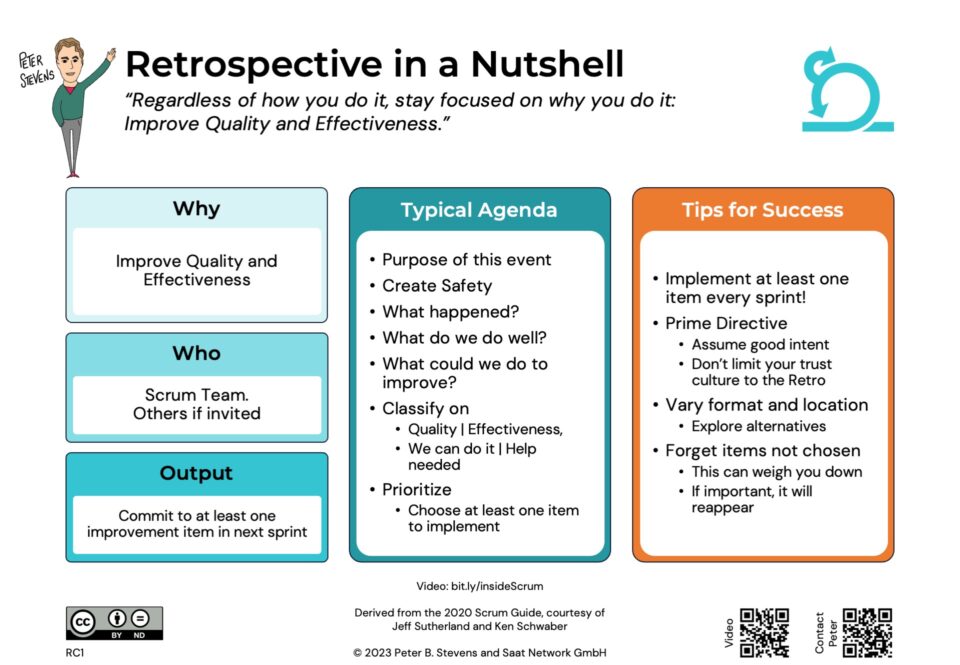The Scrum Value Simulation
12-03-2010On-Site Certified ScrumMaster Course on eBay
21-03-2010A colleague and Lean-Master at a large financial institution gave me a copy of Lean Kaizen: A Simplified Approach to Process Improvements by George Alukai & Anthony Manos. More than anything else, this book drove home to me the similarities and differences between Scrum and Lean (at least Lean, outside of Software Development).
‘The heart of Lean is the Kaizen Process.’ Kaizen means ’change for the better’ and is loosely translated at Continuous Improvement. This is actually a misleading translation, because Kaizen does not imply an iterative repeated process.
The core Kaizen event is nothing else than a Scrum Retrospective. In fact, the descriptions of how to run the meetings are so similar, I suspect they have a common source.
Two differences become quickly apparent:
- While Lean talks ‘bottom up’, it assumes top-down management. This book describes (sometimes in excruciating detail) how to organize a Kaizen event, including one month of preparation, a few days for the event itself, and then a month of post processing. My favorite suggestion was creating posters ‘Coming to a Workplace Near You: IMPROVEMENT!’ I can see the staff rolling their eyes.
- Each Scrum Team holds a Kaizen event once per sprint. You might even argue that the daily scrum is a Kaizen event. So 12 to 24 times per year is typical.
By following the approach in this book, one group might get 6 Kaizen events per year, but probably more like one to two, because of the effort involved.
The more subtle difference is that management organizes & choreographs the process. The advantage of the Lean approach is that management is more committed making the suggestions happen. I have experienced that this can be a problem for Scrum teams…
Under Scrum, each team sends a filtered, prioritized list of improvements, usually one or two top issues to management after every sprint. When management supports the Scrum teams, wonders can happen. Would you like to be one of the companies which discovered ‘we got more lean doing 6 months of Scrum than doing 3 years of lean with traditional management’?





2 Comments
Hiya,
I don't agree on your last sentence.
Lean methodology prone to remove everything that is not needed or, depending where you come from, to optimize the flow of production.
IMHO Scrum aims at giving release of softwares at every release, it has nothing to do with lean.
Moreover, Knaban doesn't necessarily involve an heavy change in project management. So, if the firm isn't really involved in, it won't change anything from the outside point-of-view.
As Scrum have a global vocabulary and special artifacts, its changes are more visible from the outside. It's like if you decide to get CMMI approval or to move on the RUP, you'll have significant changes, very visible.
(This is not very clear, but the idea lies somewhere)
Cheers
Hi François,
IMHO the focus of Scrum is on identifying organizational dysfunction. Make the problem visible, then you can deal with it.
"Lean Software Development" is so far removed from what, say, the Lean Management Institute, would tell you about Lean that it's not funny. I would call Kanban an Agile Framework that draws heavily on Lean Principles. And even Kanban can cause real conflict with management.
You right about one thing though: Scrum does not give you VSD's and the many tools of Lean. It does apply the principles consistently (if less explicitly in some cases than Kanban).
Still, I have seen enough companies unable to break out of their sclerosis using top down "lean" management. I have watched these same companies make tremendous progress in just 6 months doing Scrum.
So I am convinced that if you set out to do Lean, and use Scrum as your means to accomplish that goal, you will be far more effective than if you just apply Lean Principles and Tools using traditional management practices.
Cheers,
Peter